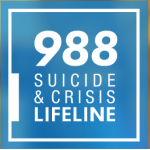Suicide rates rose more than 30 percent in half of states between 1999 and 2016, according to new data released by the Centers for Disease Control and Prevention (CDC). In fact, suicide is the 10th leading cause of death in the United States.
Published in the CDC Vital Signs monthly report, the data, including many infographics and the video below, are available on the CDC website.
The report’s overview stresses that “mental health conditions are often seen as the cause of suicide, but suicide is rarely caused by any single factor. In fact, many people who die by suicide are not known to have a diagnosed mental health condition at the time of death.”
Other findings include:
- Nearly 45,000 lives were lost to suicide in 2016.
- Males outnumber females in cases of suicide.
- Suicide rates increased in every state except Nevada, where it decreased 1 percent.
- More than 50 percent of those who died by suicide did not have a known mental health condition.
- People without known mental health conditions who died by suicide were more likely to be male and die by firearm.
- Other factors that contribute to suicide, regardless of the presence of known mental health conditions include:
- Relationship problems (42 percent)
- Crisis in the past or upcoming two weeks (29 percent)
- Problematic substance abuse (28 percent)
- Physical health problem (22 percent)
- Job/financial problem (16 percent)
- Criminal legal problem (9 percent)
- Loss of housing (4 percent).
“These findings are disturbing,” Anne Schuchat, MD, principal deputy director of the CDC, told CNN. “Suicide is one of the top 10 causes of death in the U.S. right now, and it’s one of three causes that is actually increasing recently, so we do consider it a public health problem—and something that is all around us.”
In the CDC’s press release about the report, Schuchat said suicide “is a tragedy for families and communities across the country” but suggested that “everyone can play a role in efforts to help save lives and reverse this troubling rise in suicide.”
Knowing the warning signs of suicide, included in the report, can help to prevent it. The report also encourages prevention on a state and governmental level, saying it “recommends that states take a comprehensive public health approach to suicide prevention and address the range of factors contributing to suicide. This requires coordination and cooperation from every sector of society: government, public health, health care, employers, education, media and community organizations.”
For more information about preventing suicide, view the report online or visit other CDC resources and websites like BeThe1To.com. If you or a loved one feels depressed or has considered suicide, call the National Suicide Prevention Lifeline at 800.273.TALK (800.273.8255) or visit the National Suicide Prevention Lifeline website. You can also contact the crisis text line, found here. The Trevor Project, another suicide prevention resource, focuses on the LGBT community.







Comments
Comments